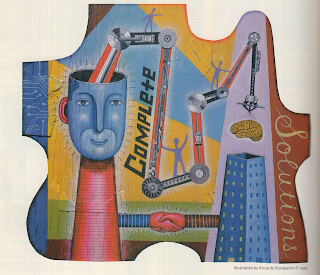HW11

PDN, December 2014. Page 52 For this week's blog, I talk about "creative" pieces. Of course everyone here knows what being creative means, but it is a rather general term that can be applied to lots of different topics. The topic of creativity for this blog focuses a lot on critique, particularly subjective critique, which involves a peer or instructor to look at the piece and identify the strengths and weaknesses. As mentioned in the textbook, subjective criticism focuses on the the compositions meaning, emotion, intent, and relationships to different cultural events. Unlike objective criticism , critiquing subjectively does not directly focus on simple observation, but it is more interpretive and thought provoking to say the least. With subjective criticism, viewers can go deeper into what an art piece represents as a whole. Such discussion does not always focus on the art, but it can also go towards emphasizing the current issue...



